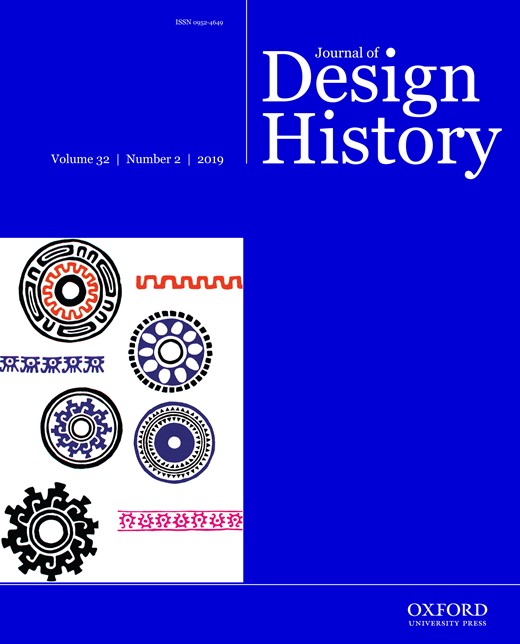-
Views
-
Cite
Cite
Rachel Gotlieb, The ‘Minster’ Jug as a ‘Pet’ Agent of Victorian Design Reform, Journal of Design History, Volume 32, Issue 2, May 2019, Pages 123–145, https://doi.org/10.1093/jdh/epy041
Close - Share Icon Share
Abstract
In 2012, octogenarian Rosemary Knox donated a ‘Minster’ jug manufactured by Charles Meigh & Son in 1844 to the Gardiner Museum in Toronto. The relief-moulded vessel, depicting crisply carved representations of the Madonna and Child and John the Baptist, became the catalyst for this article. Tracking the life of the Knox ‘Minster’ jug through the lens of donor, collector, curator, maker and critic across temporal and geographical space first sheds important new light on the contradictions of the Victorian design reform debate and secondly reveals the biases and hierarchies of collecting and curating Victorian design. Between the 1840s and 1860s, pottery manufacturers saw novelty jugs like the ‘Minster’ as ‘pet’ subjects, a term coined by the Art-Union because they were popular with the public, and thus became fodder for design reformers and critics alike. Recent design historians have largely ignored the inconsistencies of the Victorian design reform debate as evidenced in the critical responses to relief-moulded jugs in contrast, to pictorial wallpaper and carpets. Whether cherished or denigrated, Victorian relief-moulded jugs, such as that represented by the Knox ‘Minster’ jug, offer insights into Victorian design reform and curation and collecting from the nineteenth to the twenty-first centuries.




